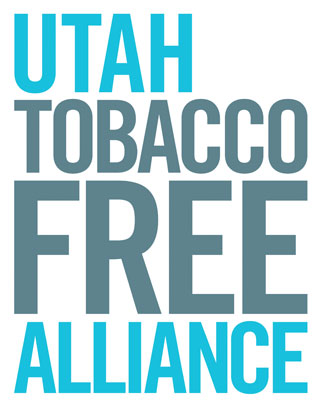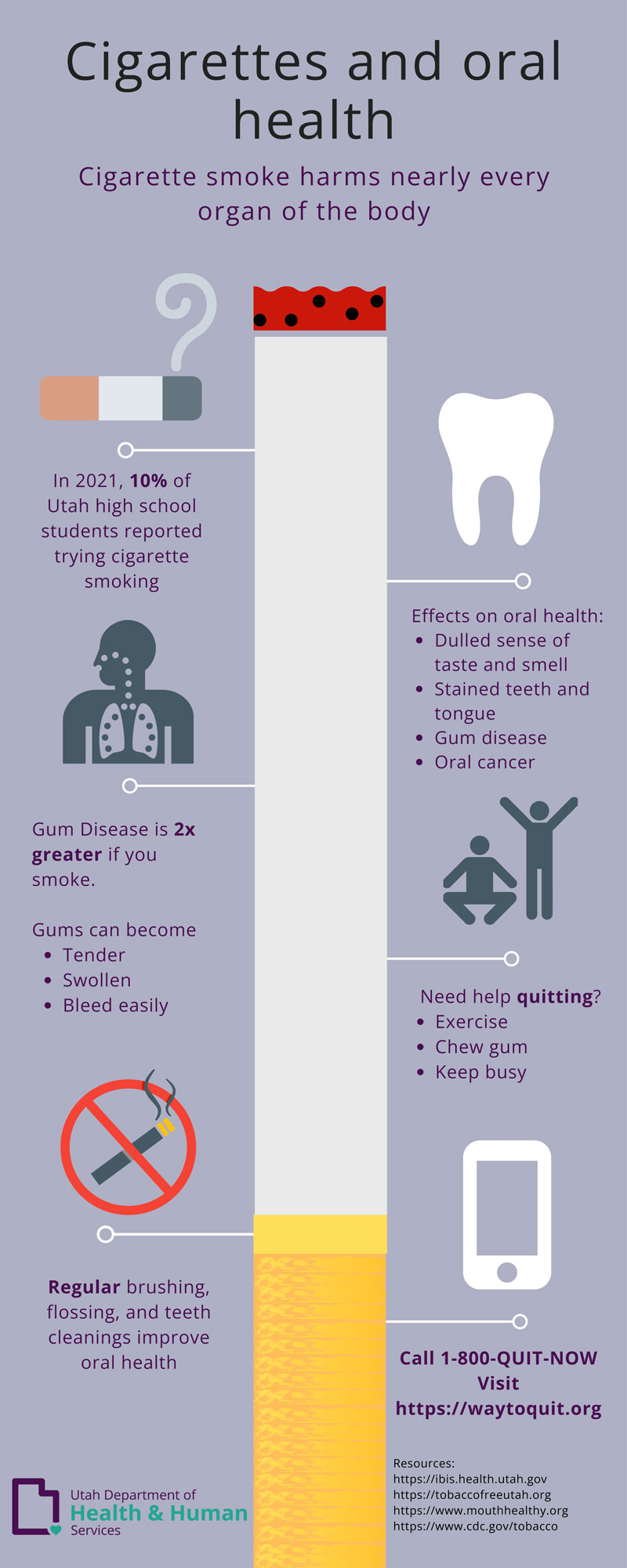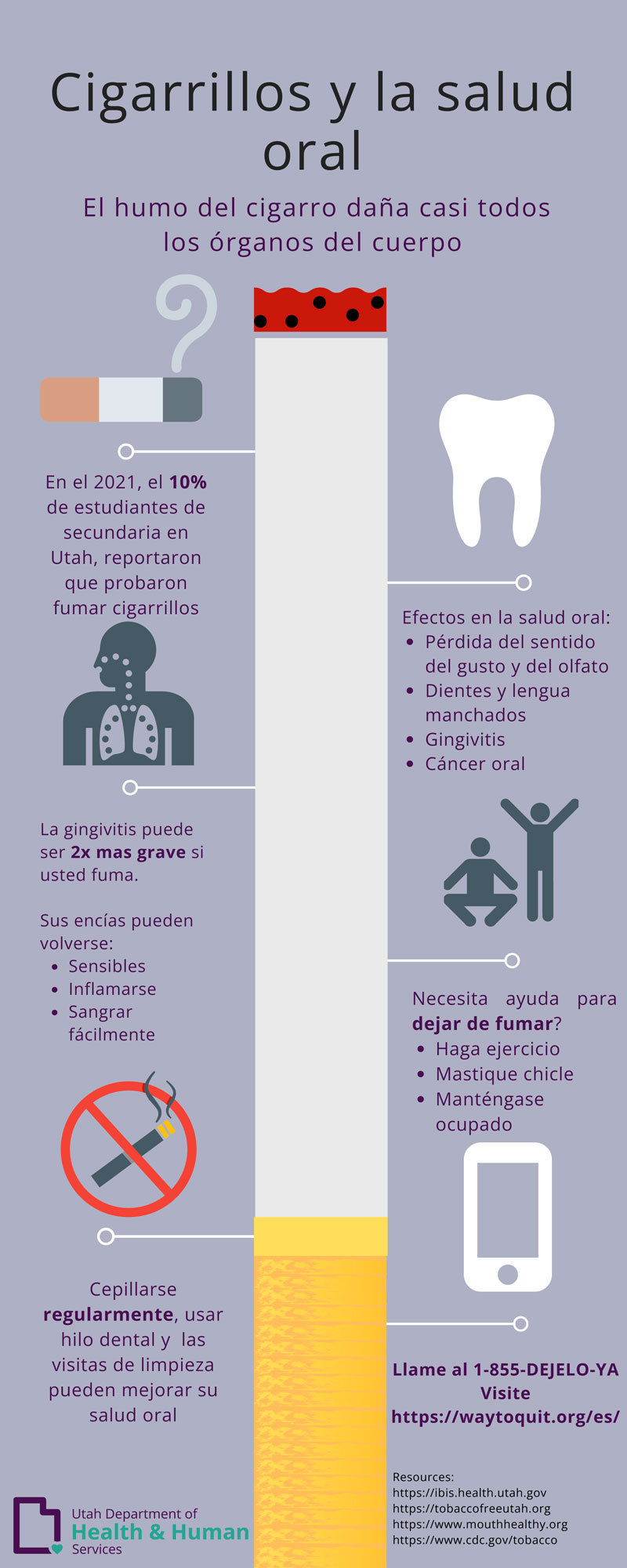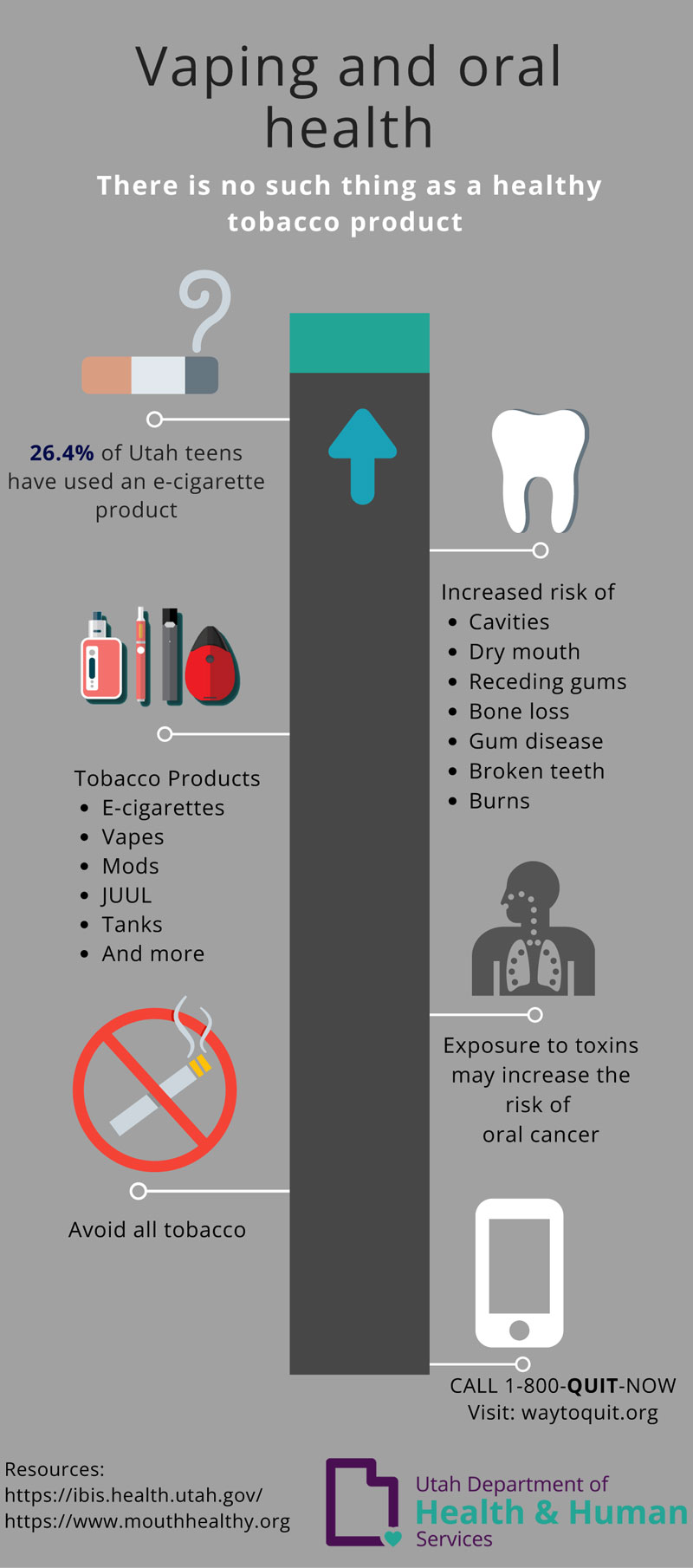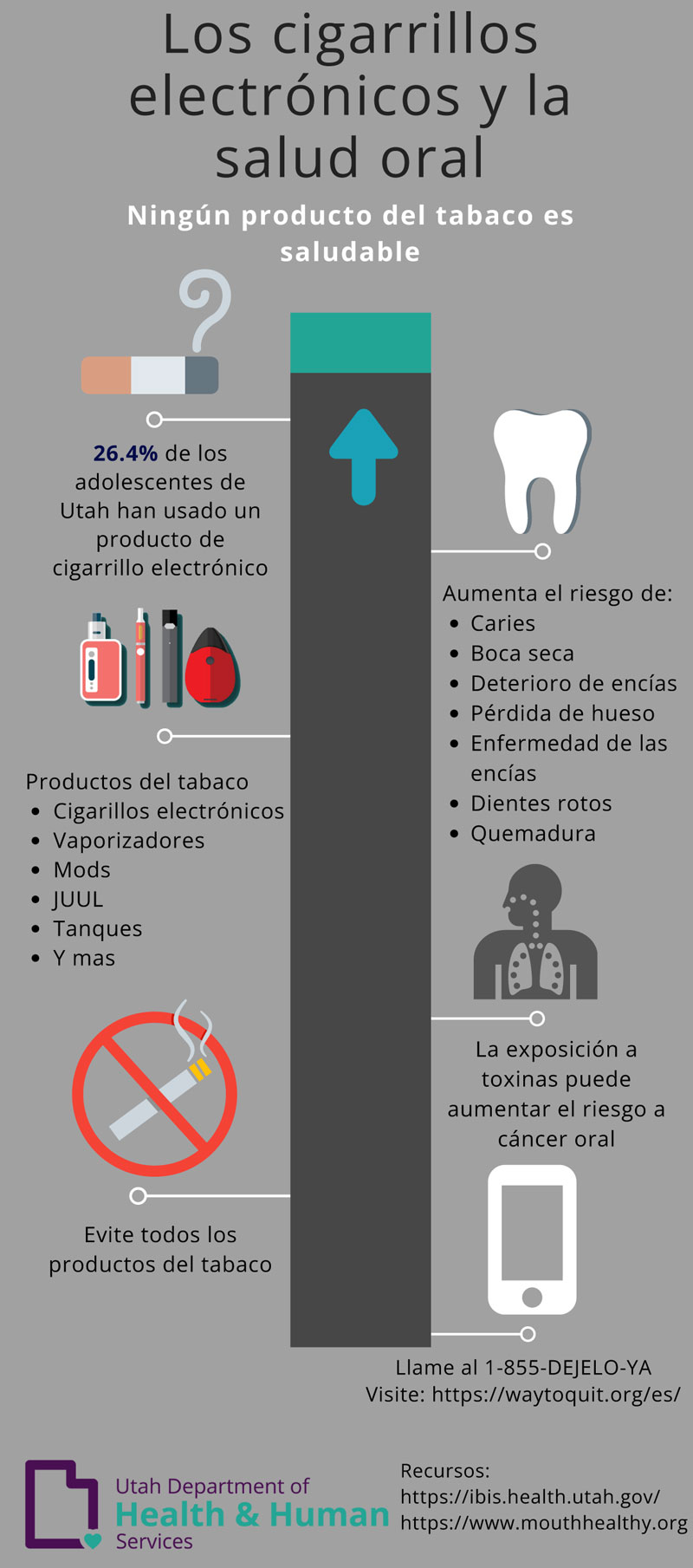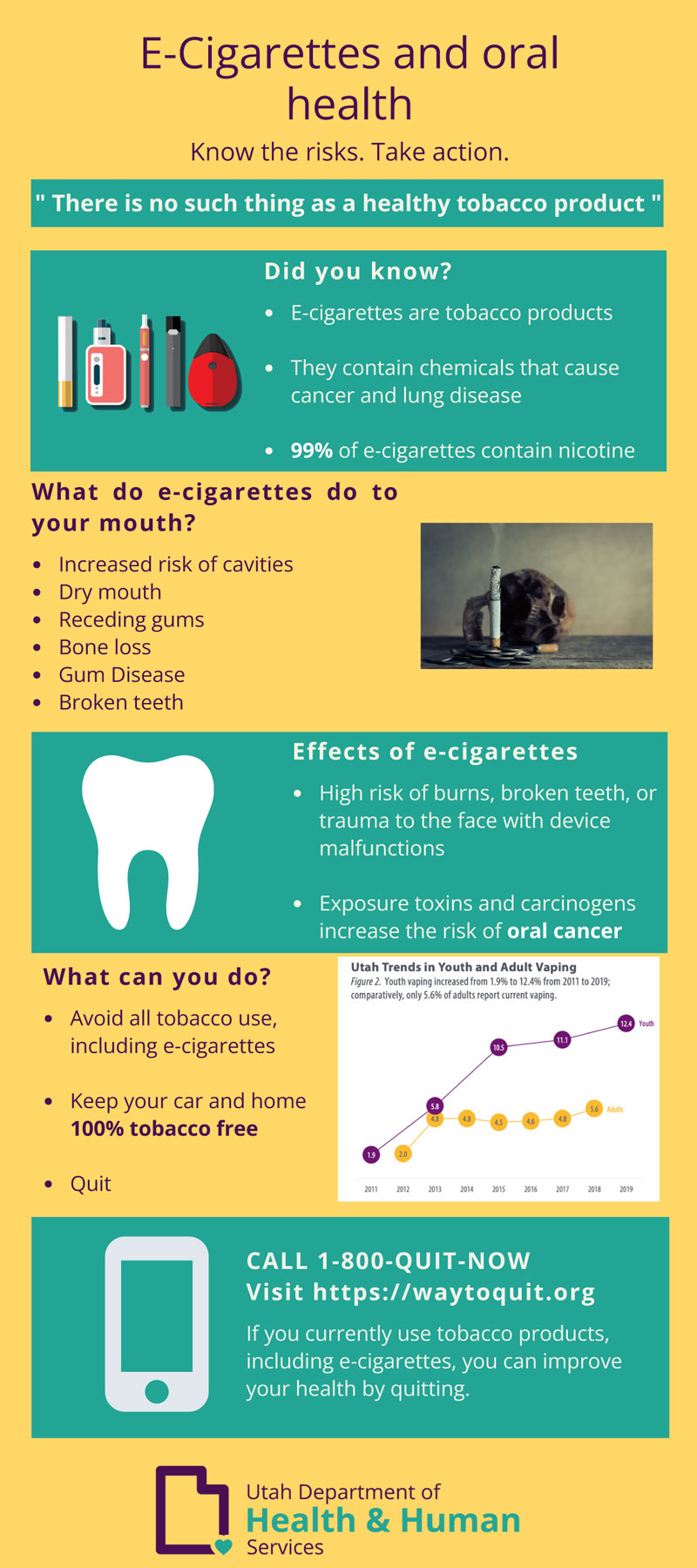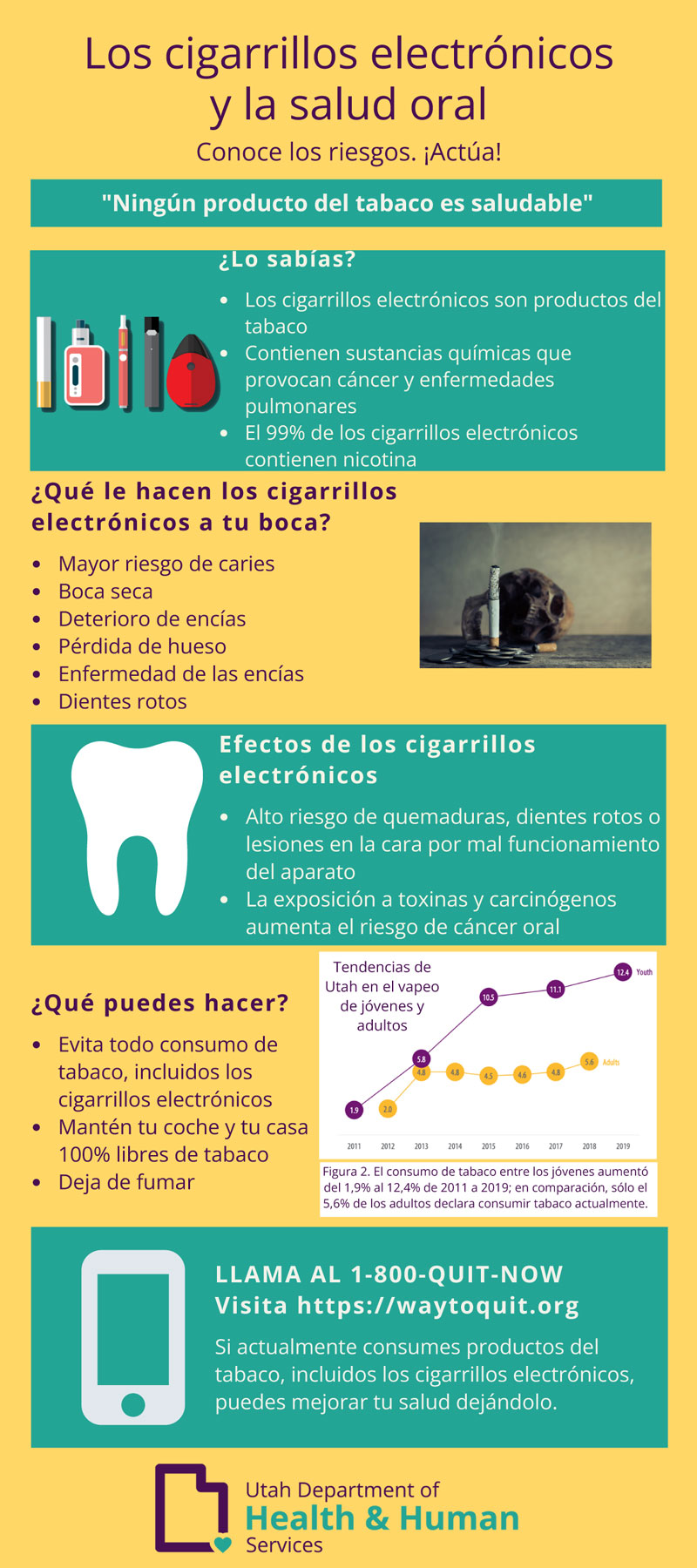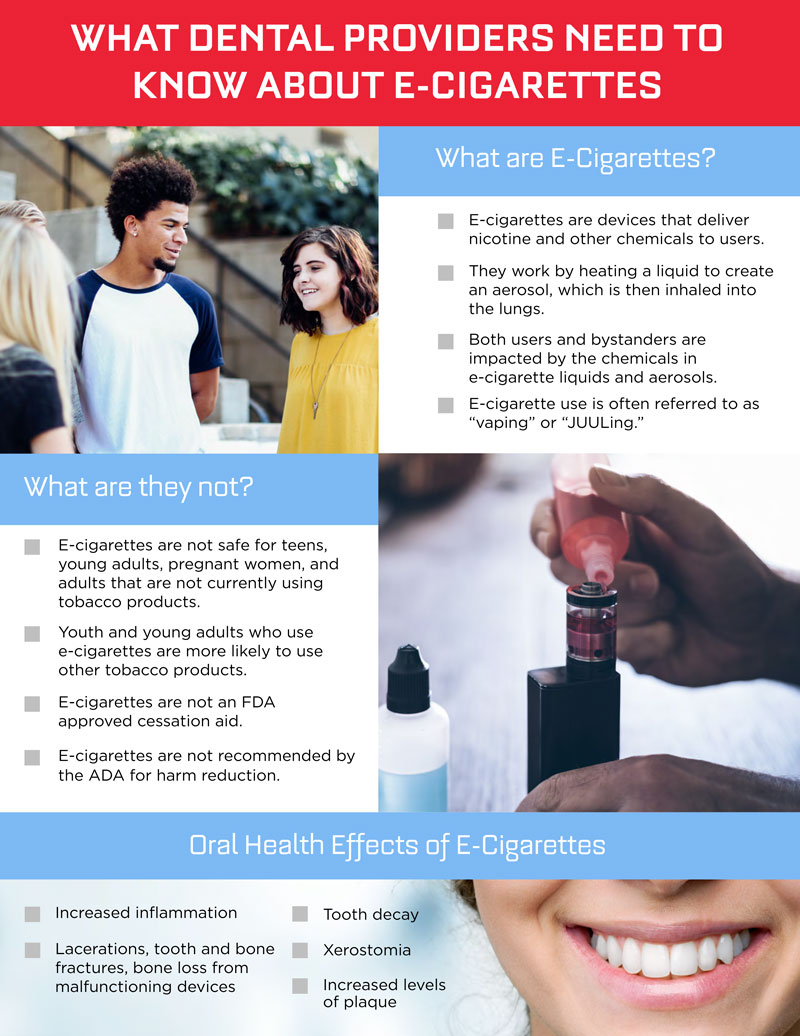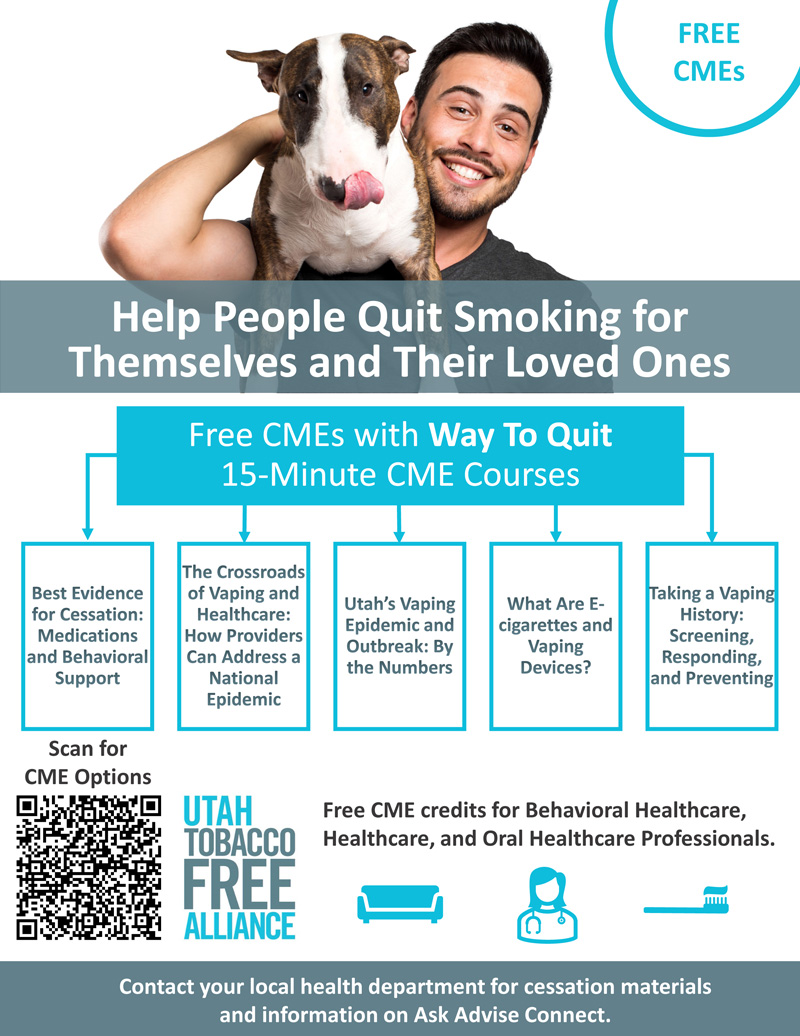Cessation
Utah Department of Health and Human Services - waytoquit.org
Smokeless Tobacco Cessation Project - mylastdip.com
Surgeon General - www.surgeongeneral.gov
University of Utah - School of Medicine - medicine.utah.edu
Vaping CME Modules
The Crossroads of Vaping and Healthcare: How Providers Can Address a National Epidemic
Free Continuing Medical Education (CME) developed for Utah healthcare professionals.
There are four, 15-minute modules for a total of 1 CME.
Module 1 - Utah's Epidemic and Outbreak: By the Numbers
Module 2 - What are E-cigs and Vaping Devices?
Module 3 - Taking a Vaping History: Screening, Responding, and Preventing
Module 4 - Best Evidence for Cessation: Medications and Behavioral Support
Details about how to register and watch found at https://waytoquit.org/healthcare-providers/learning-modules/
Second-Hand Smoke
Environmental Protection Agency - www.epa.gov
National Cancer Institute - www.cancer.gov
Surgeon General - www.surgeongeneral. gov
National Institute of Health - www.nlm.nih.gov
Utah Department of Health and Human Services - www.tobaccofreeutah.org
General Tobacco
Center for Disease Control and Prevention - www.cdc.gov
Utah Department of Health and Human Services - www.tobaccofreeutah.org
World Health Organization - www.who.int
Campaign for Tobacco-Free Kids - www.tobaccofreekids.org
The Tobacco Atlas - www.TobaccoAtlas.org
Bear River Health Department - www.brhd.org
Central Utah Health Department - www.centralutahpublichealth.com
Davis County Health Department - www.co.davis.ut.us
Salt Lake Valley Health Department - www.slvhealth.org
Southeastern District Health Department - www.southeastuthealth.org
Southwest Utah Health Department - www.swuhealth.org
Summit County Health Department - www.summitcountyhealth.org
Tooele County Health Department - www.tooelehealth.org
TriCounty Health Department - www.tricountyhealth.com
Utah County Health Department - www.utahcountyonline.org
Wasatch County Health Department - www.wasatchcountyhd.org
Weber-Morgan Health Department - www.webermorganhealth.org
Tobacco Facts
- • 1,100 people die every year in Utah from smoking related causes.
- • Currently 1 in 10 Utah adults smoke cigarettes.
- • Each household in Utah pays $523 every year for smoking-caused government expenditures.
- • Cigarette smoke contains more than 4,000 chemicals.
- • Each year 1,400 kids (under 18) in Utah become daily smokers.
- • Increasing tobacco taxes is an effective way to prevent and reduce smoking, especially among kids.
- • Smokeless tobacco or other forms of nicotine are NOT a safe alternative to smoking.
- • More than 5 million children alive today will die prematurely from smoking-related illnesses.
- • Nearly every adult who smokes (almost 90%) took his or her first puff at or before the age of 18.
- • More people die every year from tobacco than fires, illegal drugs, homicides, suicides, AIDS, motor vehicle injuries and alcohol combined.
- • Utah incurs $345 million in tobacco-related health costs every year and $294 million in lost productivity costs due to smoking caused productivity loss.
Secondhand Smoke Facts
- • More than 50,000 U.S. non-smokers die from secondhand smoke (SHS) every year.
- • In Utah, over 100,000 children are exposed to SHS in their homes.
- • 230 adult non-smokers die in Utah each year from SHS exposure.
- • SHS is classified as a Class A Carcinogen, the most dangerous category of cancer-causing agents, there is no safe level of exposure.
- • SHS increases a non-smoker’s risk of heart disease by 25-35%.
- • Every year in the U.S., there are 10,000 cases of low birth weight due to SHS.
- • Smoke-free laws help protect restaurant and bar employees and patrons from the harms of secondhand smoke.
- • Smoke-free laws help the seven out of every ten smokers who want to quit smoking by providing them with public environments free from any pressure or temptation to smoke.
Thirdhand Smoke Facts
- • Thirdhand smoke differs from secondhand smoke because it is the remaining particles that are deposited in the air and surface even after the cigarette has been extinguished. Thirdhand smoke can be inhaled, ingested or absorbed.
- • Thirdhand smoke and its effects linger long after the act of smoking has passed.
- • The chemicals derived from smoking remain on clothes, hair, furniture, carpeting or other surfaces.
- • Children and hospitality workers are most vulnerable to the toxic effects of tobacco smoke residue.
More information on thirdhand smoke, including research, toolkits, and videos can be accessed at: http://www.no-smoke.org
Smokeless Tobacco
Smokeless tobacco products are not without harm. As the number of smoking bans continues to increase nationwide, a variety of smokeless tobacco products are being marketed to both smokers and non-smokers. While some have proposed using smokeless tobacco as a smoking cessation aid, there is no scientific evidence that using smokeless tobacco can help a person quit smoking. Furthermore, these products are not a safer alternative to cigarettes, as scientific evidence shows they cause cancer and other diseases.
